Eye Color in Horses
Most horses have brown eyes but other eye colors are seen. These eye colors can include blue, green, yellow, amber, or hazel. Most variation in eye color is the result of a white pattern or dilution.
Blue Eyes in Horses
Blue Eyes and White Pattern
Blue eyes in horses (and other mammals) are caused by a reduction of pigment (melanin) in the eye. This causes light to reflect differently from the eye making the eye appear blue. Blue eyes and partial blue eyes in horses are most often associated with a white pattern. They most often occur when the white pattern passes near the eye removing pigment from all or part of the eye. The white patterns that are theorized to cause blue eyes are the Splashed White Patterns (SW1, SW2, SW3) and Frame (LWO). These patterns like to cause large bald (all white) faces which often include or pass near the eye thus causing the majority of blue eyes. One interesting variation to this scenario is the horse who has a blue eye with only a minimal amount of white. This type of blue eye is still thought to be caused by a white pattern however, the exact mechanism that causes blue eyes without associated face white is unknown. It should also be noted that even if your horse carries Frame or Splashed White this does not guarantee blue eyes or blue eyed foals. Many Splashed White and Frame Overo horses do not have Blue eyes and the variations in expression of these white patterns and the blue eyes associated with them is not understood. Tobiano, Sabino, and the Dominant White family of patterns tend to want to retain color in the eye area thus blue eyes are rare with these patterns unless Slashed White or Frame is also present.
Blue Eyes and Dilution
The dilution in horses that most often causes blue eyes is the cream dilution. The cream mutation is found on the gene Membrane Associated Transporter Protein (MATP). This gene is associated with a form of albinism (color dilution) in humans and also with diluted color in many other mammals. The mutation in horses is incompletely dominant and results in palomino, buckskin, and smokey black when only one copy of the mutation is present. When two copies of the dilution are present it causes more extreme dilution resulting in loss of pigment in the eye. This reduction of pigment usually results in the eyes being light blue although green, hazel, and light yellow have also been observed.
Blue eyes may also result when the cream gene is present with another dilution genes. These include the pearl gene and the champagne gene. If either of these dilutions is present as well as cream, blue eyes can result.
Amber and Hazel Eyes in Horses
Amber and Hazel Eyes and Dilution
Amber and Hazel eyes in horses are most often caused by a dilution. The Champagne dilution almost always results in Amber eyes in adult horses although green and blue-green have been reported. The pearl gene also results in Amber Eyes in adult horses. Although, green eyes have been reported in champagne horses they are very rare.
Amber Eye Color or “Tiger Eyes” in Paso Fino Horses
Yellow eyes are sometimes found in Paso Fino horses without any accompanying coat color dilution. These yellow eyes are often referred to as “Tiger” or “Goat” eyes. Pedigree research had led to the belief that a recessive mutation was responsible. Further genetic research by Elizabeth J. A. Kowalski has led to the discovery that ECA1 is the probable locus responsible. Research for the causative mutation is ongoing. It is possible that this gene mutation could be responsible for yellow eyes in other horses of Spanish descent.
Green Eyes in Horses
Green eyes are the rarest eye color in horses. They are most commonly found in pearl or cream and pearl horses but even then are uncommon. Horses that are homozygous for cream (Cremello, Perlino, and Smoky Cream) or are Cream and Champagne are occasionally seen with Green or Greenish-blue eyes. In homozygous cream horses, they are sometimes seen along with slightly darker than average skin pigmentation.
For more examples of different eye colors in horses see our Horse Eye Color Gallery
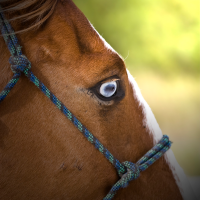
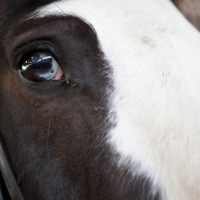
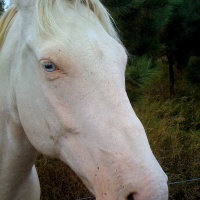


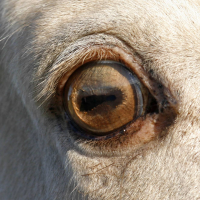


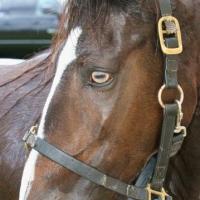

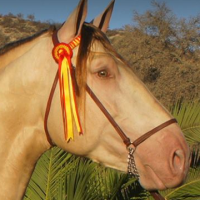
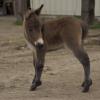

Are hazel colored eyes also
Are hazel colored eyes also connected to heterozygous cream?